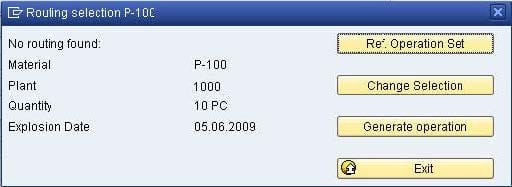C_TSCM42_65 Online Practice Questions and Answers
What does SAP ERP mean?
A. SAP ERP is a planning system in which extended planning processes can be mapped.
B. SAP ERP is a system hardware that includes modules for purchasing, sales and distribution, materials management, production and so on.
C. SAP ERP is a technological platform, on the basis of which customer-specific extensions can be imported.
D. SAP ERP is an application that an enterprise can use to manage its business processes efficiently.
An enterprise wants to use SAP ECC requirements planning together with the NETPL procedure (net change planning in the planning horizon). The planning horizon should be set equally for all materials by default. However, some materials need to have a different planning horizon. What procedure do you recommend for setting the planning horizon?
A. Set the planning horizon in the MRP groups in Customizing and assign variant entries via the plant parameter settings.
B. Set the planning horizon in Customizing using the plant parameter settings and assign variant entries via the MRP groups for the corresponding materials.
C. Set the planning horizon in the MRP groups in Customizing and store the variant values in the material masters for the corresponding materials.
D. Set the planning horizon in the plant parameters in Customizing and store variant entries in the material masters for corresponding materials.
Which of the following properties applies to multi-site planning in SAP ECC?
A. Multi-site planning can be activated using the corresponding planning strategy.
B. Both withdrawal from alternative plant and stock transfer from another plant are defined via special procurement keys.
C. The use of "scope of planning" (cross-plant total planning) is mandatory for multi-site planning.
D. When using one-step stock transfer posting, transfer stock is created in the receiving plant.
Which of the following functions are available in SAP ECC when using capacity leveling? (Choose three)
A. Finite capacity scheduling
B. Setup time reduction
C. Midpoint scheduling
D. Lot size optimization
E. Batch size optimization
You want to produce a finished product only when it is requested by a customer order in make-to- order production. However, all assemblies need to be procured beforehand.
How can you fulfill these requirements in SAP ECC? (Choose two)
A. Use strategy 30 (production by lots) for the finished product and strategy 70 (planning at the assembly level) for all assemblies in the bill of material.
B. Use strategy 40 (planning with final assembly) for the finished product and strategy 70 (planning at the assembly level) for all assemblies in the bill of material.
C. Use strategy 50 (planning without final assembly) for the finished product and no strategy for all assemblies in the bill of material.
D. Use strategy 20 (make-to-order production) for the finished product and strategy 70 (planning at the assembly level) for all assemblies in the bill of material.
What is SAP Solution Manager?
A. A part of the SAP ECC System
B. A managed system in a system landscape
C. A stand-alone system that communicates with other systems in a system landscape
D. An add-on industry solution
In which scenario will the error message shown in the attached screenshot occur?

A. The selection method is set to "selection only by production version" in the material master.
B. The routing is not valid at the explosion date.
C. The Customizing for the order type is set to manual routing selection and a valid routing exists.
D. The material master is set to manual routing selection and a valid routing exists.
You want to create a new material with the following properties: the material is kept in stock, is externally procured, and is used as a component in the bills of material for various final products.
The material must not be sold directly.
Which standard SAP material type do you use?
A. HAWA (trading good)
B. ROH (raw material)
C. NLAG (non-stock material)
D. FERT (finished product)
You want to enhance the system statuses of a production order with user statuses.
How do you do this?
A. Define a status profile in Customizing and assign it to the production scheduling profile.
B. Define the user statuses in the Customizing table of the system statuses.
C. Define the user statuses in the order type-dependent parameters.
D. Define a status profile in Customizing and assign it to the order type.
Which function is supported by production orders?
A. Automatic creation of transfer orders at order release
B. Automatic printing of order documents at order creation
C. Automatic reading of PP master data at order release
D. Automatic selection of a work center at order release

